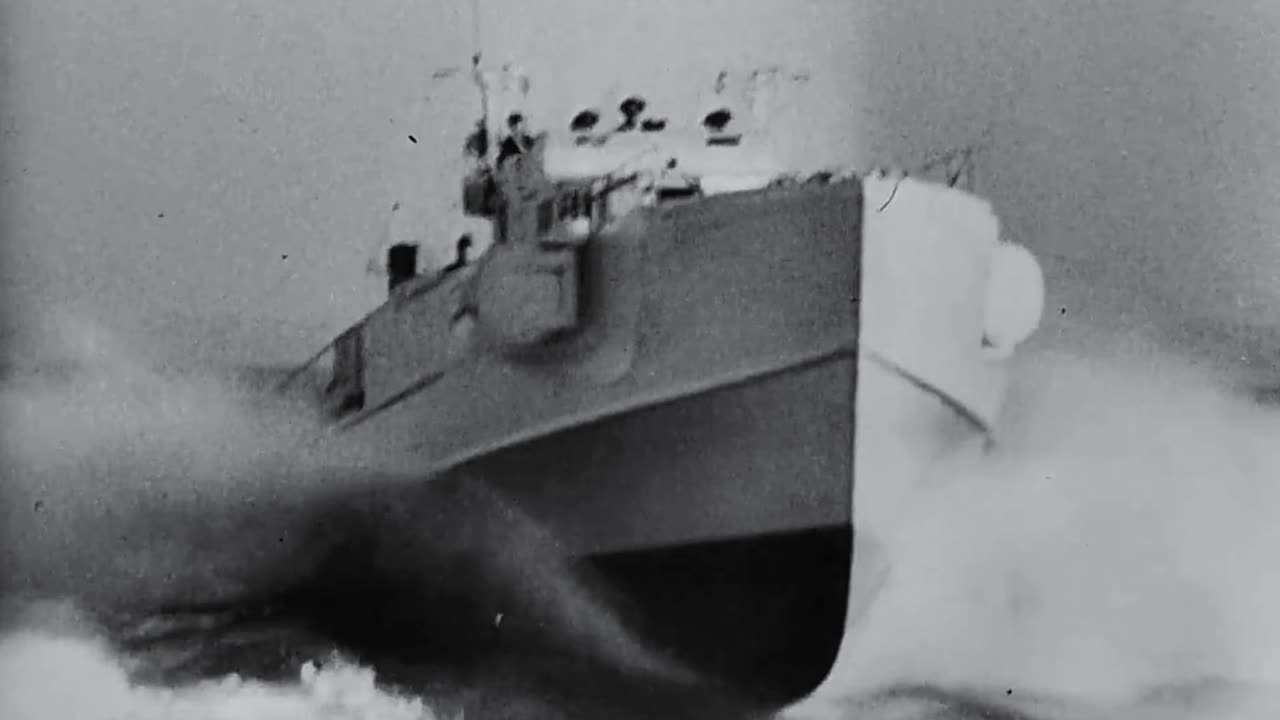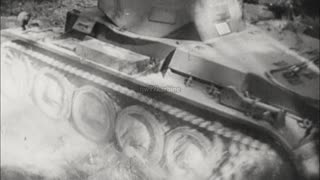Premium Only Content

German Schnellboot manufacture in 1941
The Schnellboot, or S-Boot (meaning "fast boat") represents a class of fast attack craft employed by the German Kriegsmarine during the Second World War.
The main wartime production boats, from S26 onwards (but often designated the S100 class), were very seaworthy, heavily armed and capable of sustaining 43.5 knots and could travel at up to 48 knots for short periods. These boats were armed with torpedoes and Flak guns; typically one 37mm at the stern, one 20mm at the bow with a twin mount amidships, plus machine guns. Armament varied and some S26 class boats substituted a 40mm Bofors or, less commonly, a 20mm flakvierling quad mount for the aft 37mm cannon.
The S26 class boats - which provided the bulk of the wartime deliveries - were 34.94 m long and 5.38 m in beam. Their diesel engines provided a range of 700 to 750 nmi, substantially greater than the gasoline-fueled American PT boats and British motor torpedo boats.
As a result of early war experience of combat against the fast and powerful S-boats, the Royal Navy created its MGB force and later developed better-matched MTBs, using the Fairmile 'D' hull design.
The design of the S-boot was tailored to the expected theater of operations being the North Sea, English Channel and the Western Approaches. The requirement for good performance in rough seas dictated the use of a round-bottomed displacement hull rather than the flat-bottomed planing hull that was more usual for small, high-speed boats. The shipbuilding company Lürssen at Vegesack, Bremen, overcame many of the disadvantages of such a hull and, with the private motor yacht Oheka II in 1926, produced a craft that was fast, strong and seaworthy. It was also extremely seaworthy and very light, being constructed of wooden planking over alloy frames. This attracted the interest of the Reichsmarine, which in November 1929 ordered a similar boat but fitted with two torpedo tubes. This became the S1, and was the basis for all subsequent Schnellboote.
After experimenting with the S1, the Germans made several improvements to the design. Small rudders added on either side of the main rudder could be angled outboard to 30 degrees, creating at high speed what is known as the Lürssen Effect. This drew in an "air pocket slightly behind the three propellers, increasing their efficiency, reducing the stern wave and keeping the boat at a nearly horizontal attitude". This was an important innovation as the horizontal attitude lifted the stern, allowing even greater speed, and the reduced stern wave made Schnellboote harder to see, especially at night. The rounded wood planking hull helped reduce weight, and flattened at the stern area, the aft section area was reduced at high speeds, it allowed more hydrodynamic lift.
If you would like to support the channel consider visiting https://www.buymeacoffee.com/hw97karbine
-
 2:04
2:04
hw97karbine
1 month agoPanzer I and II tanks transported by truck and trailer on maneuvers in 1939
95 -

The Rubin Report
1 hour agoAOC Doesn’t Realize How Much She Hurt Dems Shutdown Chances by Saying This
5.76K10 -
 LIVE
LIVE
The Shannon Joy Show
1 hour agoTrojan Horse Trump Whores Out To Pfizer AGAIN W/ $70B Deal To mRNA - LIVE W/ Sasha Latypova!
214 watching -
 LIVE
LIVE
LFA TV
13 hours agoLIVE & BREAKING NEWS! | WEDNESDAY 10/1/25
4,772 watching -
 30:49
30:49
Rethinking the Dollar
1 hour agoMarkets Panic: Government Shutdown Sends Gold & Bitcoin Higher | Morning Check-In: Let's Talk...
92 -
 LIVE
LIVE
Trumpet Daily
38 minutes agoTrumpet Daily LIVE | Oct. 1, 2025
331 watching -
 1:00:55
1:00:55
VINCE
3 hours agoSOMBRERO-GATE! | Episode 137 - 10/01/25
157K145 -
 LIVE
LIVE
MYLUNCHBREAK CHANNEL PAGE
3 hours ago1000's of Miles of Tunnels
668 watching -
 1:08:12
1:08:12
The Big Mig™
2 hours agoSchumer Government Shutdown Screwing America AGAIN!
5.68K8 -
 DVR
DVR
Bannons War Room
7 months agoWarRoom Live
38.8M9.03K